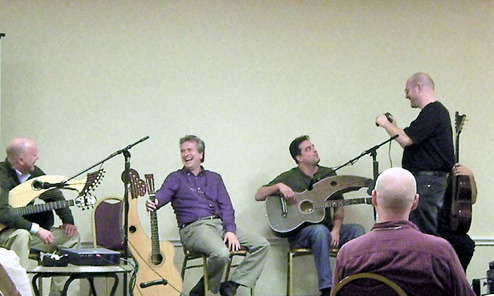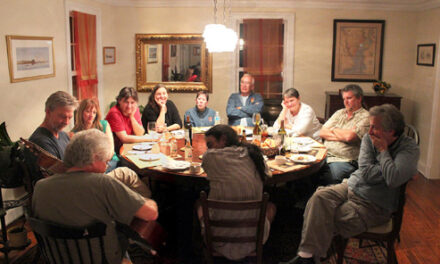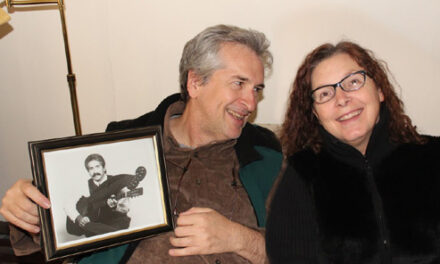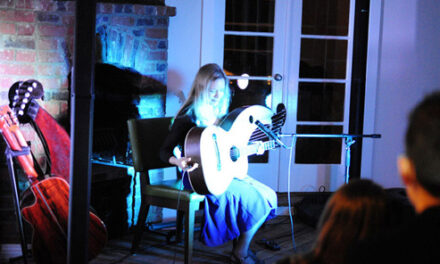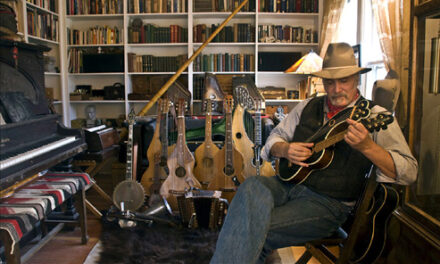In my various Gathering blogs (all accessible now from the official HGG8 page), I’ve already shown the bulk of the day’s events – the Luthier Panel and the 3 Featured Performers (Philippe, Muriel and Brian). For those who attended, I hope you liked the more interactive exchange (with advance prep) with the 3 players that Frank and I tried this year, as we’ve found that often the talented guests tend to fall back on simply playing repertoire that they will be playing in the concerts. Brian particularly seemed to enjoy the interaction (he normally does all that on his own), and I could’ve gone on for hours!
As you see, I’m also (more or less) re-creating my Genoese Harp Guitars slide show presentation in these blogs (something that may take until the next Gathering to finish!).
That leaves:
Harp Guitar Duets and Collaborations: As I was running around like crazy, I missed some of the wonderful collaborations. In fact, I’m not sure which of these were in Saturday’s segment or one of the 2 concerts.
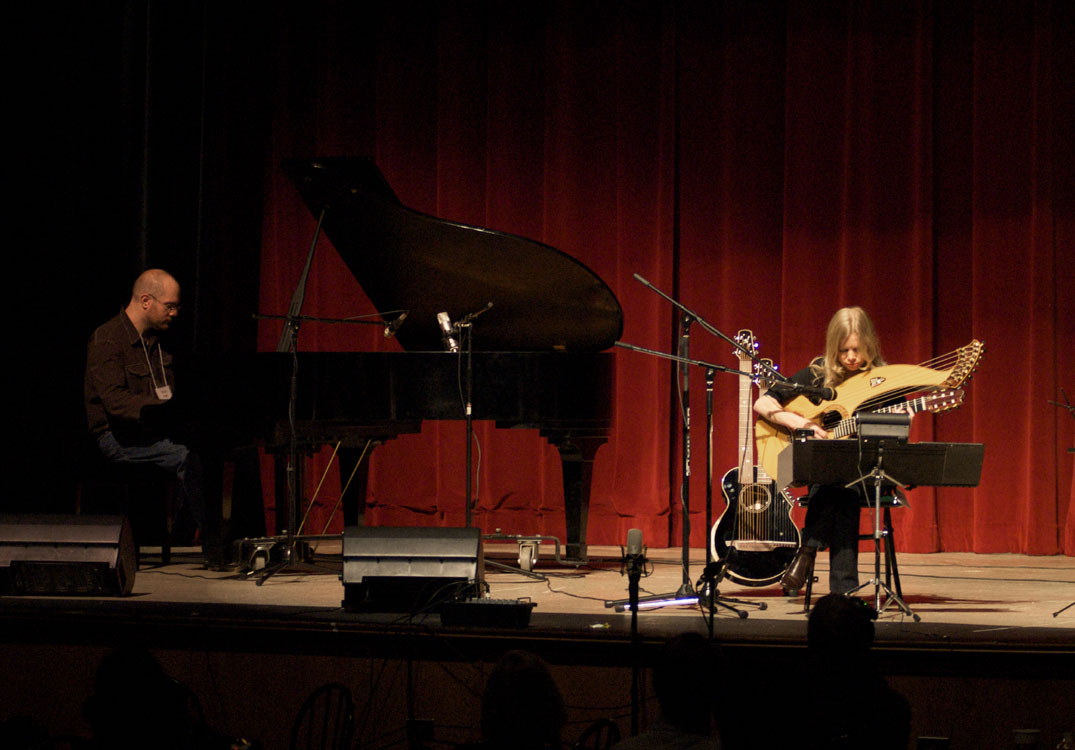 Brad Hoyt and Muriel Anderson
Brad Hoyt and Muriel Anderson
 Brad and John Doan
Brad and John Doan
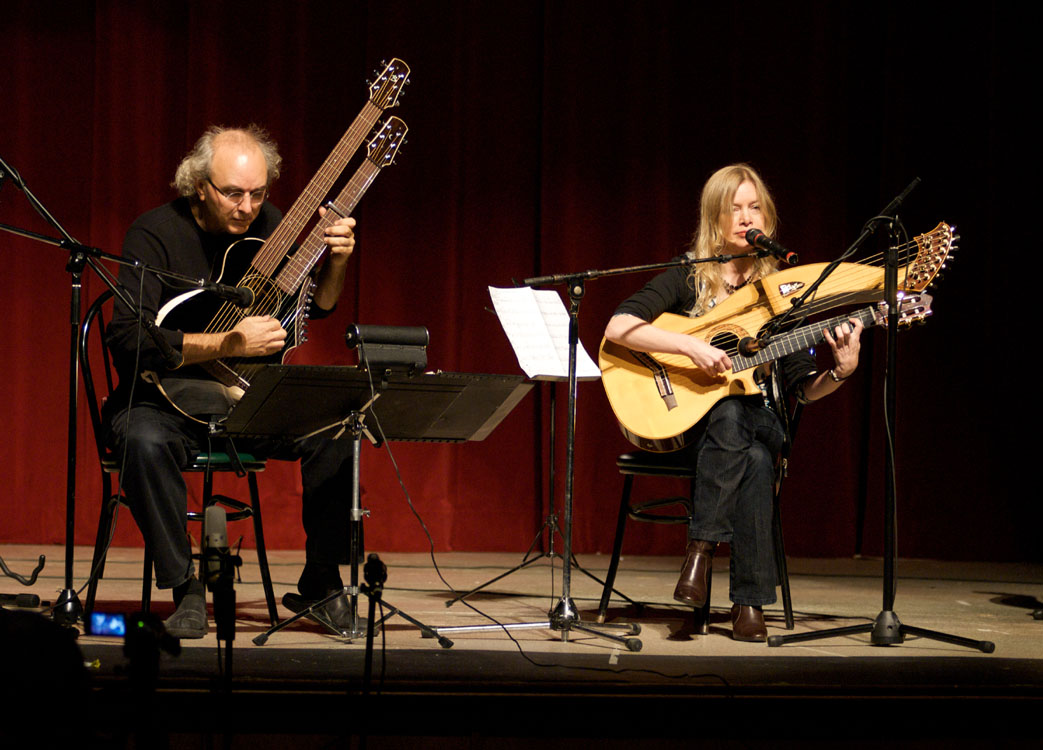 John and Muriel
John and Muriel
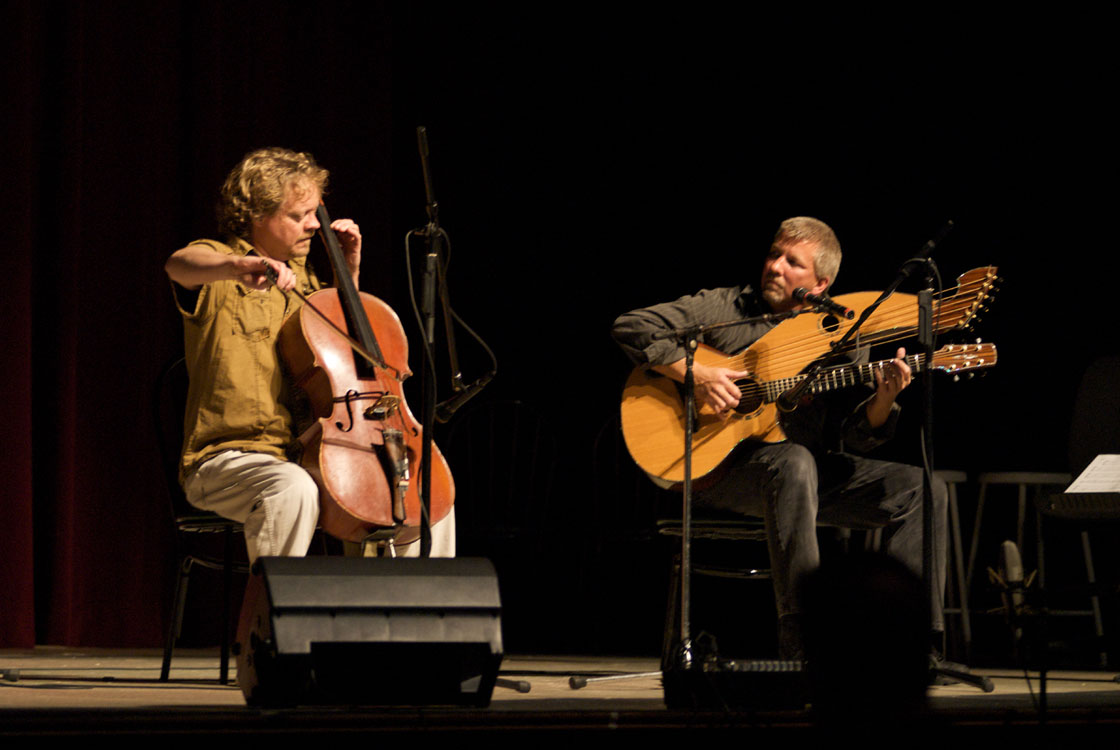 Tom Shinness (cello) and Stacy Hobbs
Tom Shinness (cello) and Stacy Hobbs
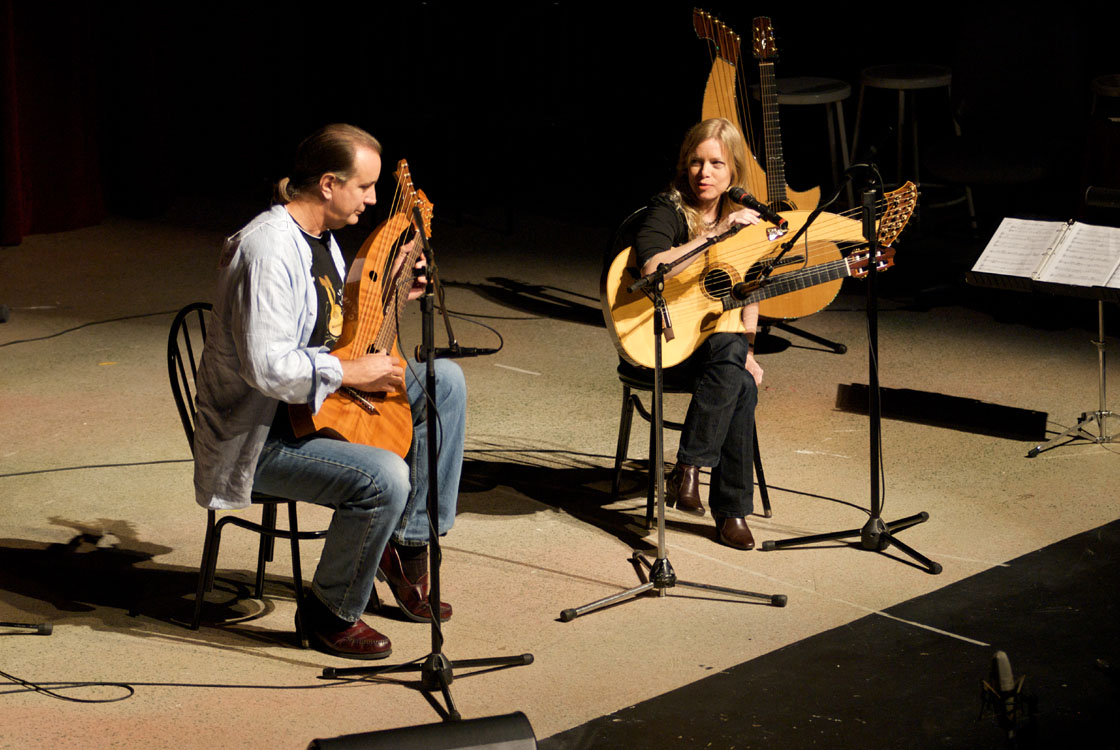 Andy Wahlberg and Muriel
Andy Wahlberg and Muriel
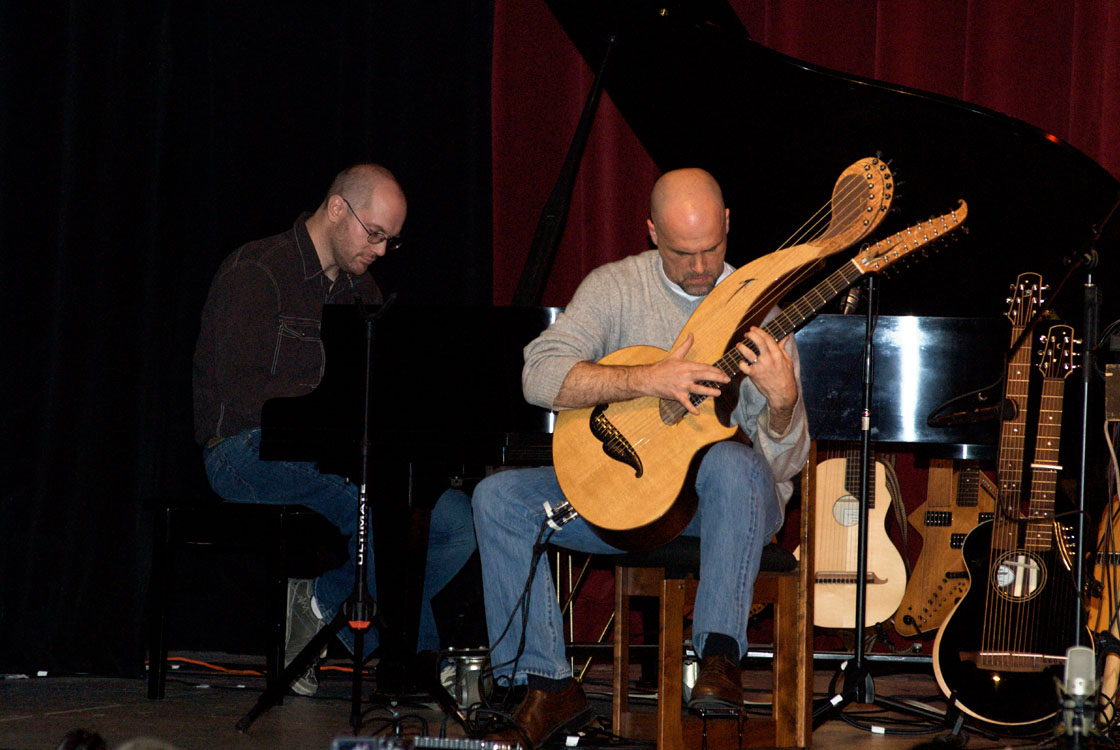 Brad and Jeff Titus
Brad and Jeff Titus
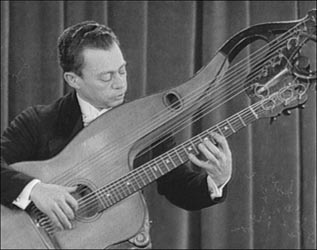
Taraffo Techniques: Some of this (but far from all) I will eventually incorporate into the Taraffo section of the site. One thing I know I missed (that ties right into the next workshop) was Taraffo’s sub-bass muting. He doesn’t. The video (slowed down to half speed) clearly shows that he uses very strong rest strokes. So in playing his descending D-C-B pattern on Stefania, the D is left ringing (as there is a string – C# – between it and the next played string). Only the C then is stopped when the B is played. In other words, he can stop the previously-played string only if descending chromatically (he has 8 chromatic subs from G to D). The low B (the 5th in the key of E minor) is always left ringing. You notice this during the final chords, when he plays the chords B, B, B- Em. Musically, one would of course want to stop the B sub-bass just before or as the Em is struck. Taraffo has no technique for this. He simply lets the B ring with the Em chord, until he finally stops all the strings with his flat hand. Your ear and brain may ignore it, as the E tonic tends to mask it, but the low 5th is there, alright. Thanks to Benoit for coming up with a couple of new ideas, and Al Carruth for explaining the 2 different pitches from different length sound waves created by the horizontal and vertical movements of the “triangle string knot” conundrum of the Gazzo tie bridge.
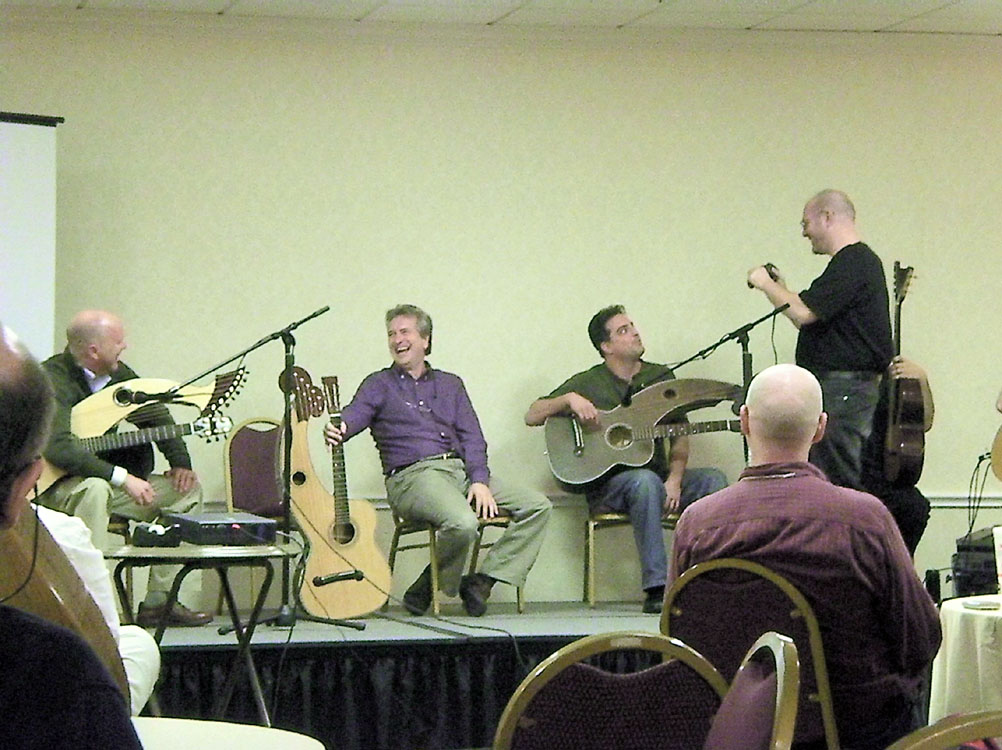
Sub-Bass Muting Workshop: Hosted by Frank Doucette, this panel featured Stephen Bennett, Jeff Titus, Brian Torosian, Dan LaVoie, Pete Bradshaw and myself. Not surprisingly, everyone had very different techniques and tricks. Stephen’s point about just letting the music (and one’s ear) dictate where to mute was well-stated, and perhaps not obvious to beginning players. Trying to figure out how he does it was another matter. I don’t know if we caught it on camera for the audience, but I was finally able to analyze (and report) the secret by hovering over SB and looking directly down in plane with the strings. For $99.95, I’ll sell anyone the secret (Actually, it’s all in the palm of the thumb, but you have to use his hand position).
Jeff demonstrated the Hedges B.I.T. pattern technique, along with some new tricks of his own. Brian discussed in meticulous detail his assorted classical string-stopping techniques (going quickly back with the thumb to damp a ringing bass one of the common ones), and the amazing up and down bass glissando muting techniques he had to interpret and invent for a mid-1800’s showpiece by Eduard Bayer. Dan managed to slow down some of his cool and funky bass patterns for us to see what the heck he does (more complicated than I thought). I free associated as usual about all my various challenges through the years trying every possible thumb technique and thumbpick for various musical goals. Pete “Block o’ Foam” Bradshaw demonstrated his invention (not available in stores) for ingeniously quieting the subs with his more classical hand position.
Here’s where our frazzled host Brad Hoyt finally managed to let his hair down, as he had to get pretty creative in order to show live on screen what was happening with the players’ right hand in real time.
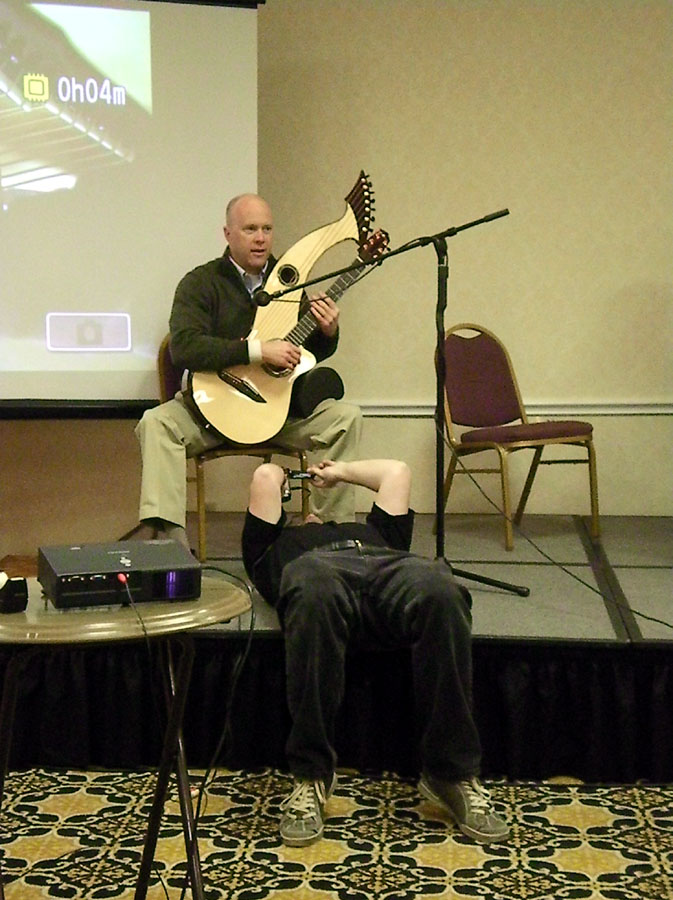
Brad filming Pete for our “instant live feed” demonstration. No, not a “crotch shot,” but the only way to film Pete’s invention in operation.

Which showed this on the screen.
All in all, it was a very entertaining hour (at least for me!) and I think we imparted a lot of priceless information.
P.S. I added a couple more photos to the Players and Luthiers blogs.

